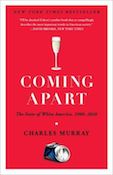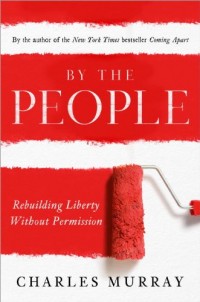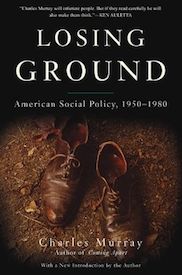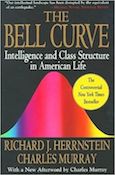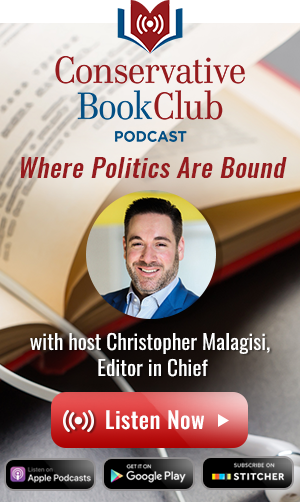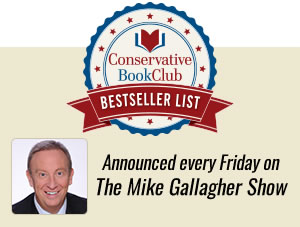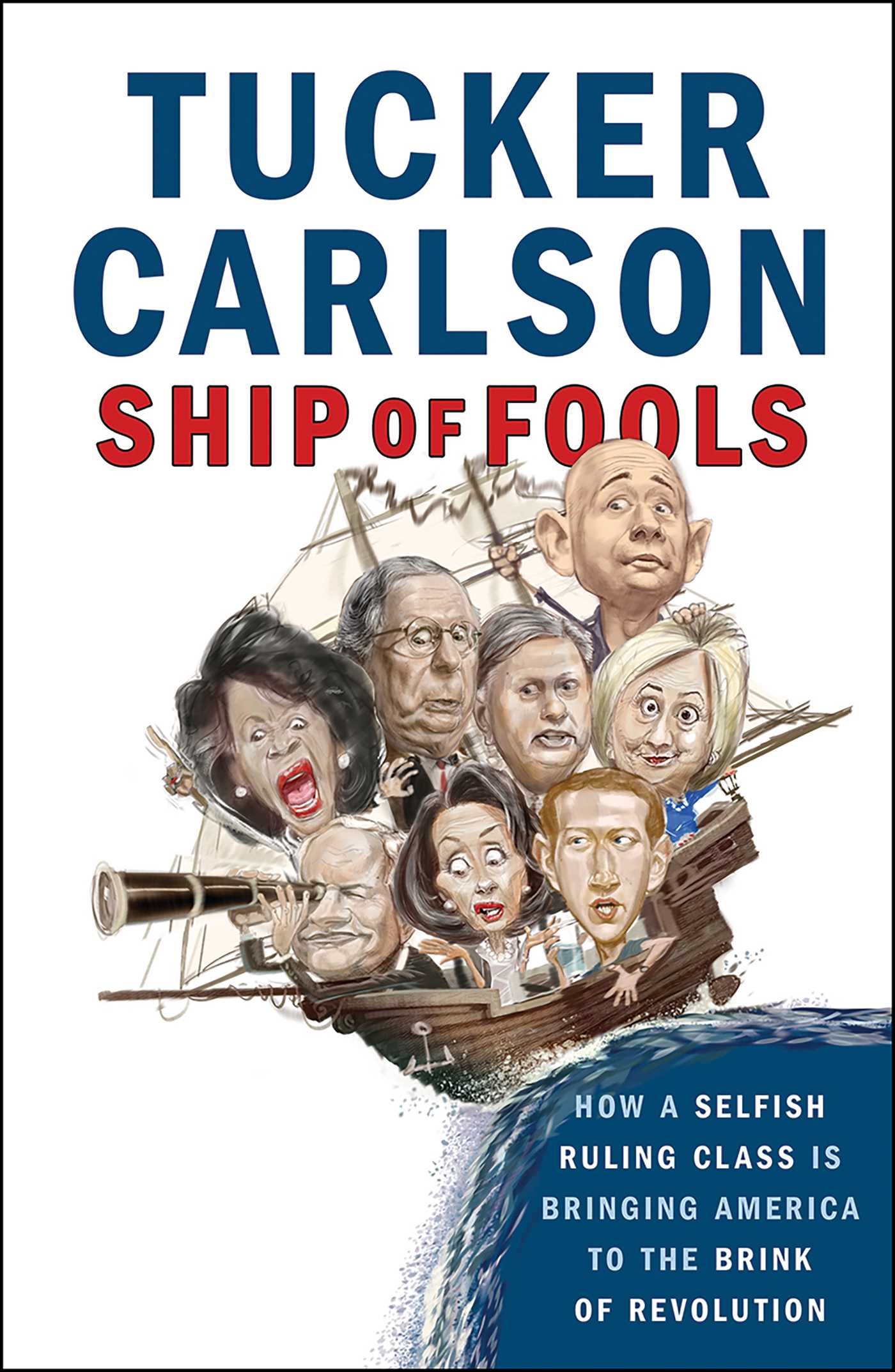Coming Apart: The State of White America, 1960-2010
Charles Murray’s new book is hardly the bombshell that placed him on the Politically Incorrect Ten Most Wanted list 18 years ago when he co-wrote “The Bell Curve” with Richard J. Herrnstein in 1994. But by providing a data-driven argument for inequality’s cultural and sociological roots, “Coming Apart: The State of White America, 1960-2010” arrives just in time for the central political and policy debate in the 2012 elections: What is the nature of the widening gap between the rich and everyone else — and what can, or should, be done about it?
Murray, the W.H. Brady Scholar at the American Enterprise Institute, contends that before the 1960s, Americans of all classes participated in a traditional common culture of civic and social engagement that valued marriage, industriousness, honesty and religiosity — credited as “American exceptionalism” by Alexis de Tocqueville in his 19th century classic “Democracy in America.”
Today, that culture persists among highly educated elites, winners in globalization’s economic redistribution, but those vigorous virtues are dissolving among globalization’s losers, the 21st century working class. Increased demographic segregation means that the elites who run the nation know little about the ominous cultural breakdown creeping up the socioeconomic ladder.
Murray describes a new, highly educated upper class of the most successful 5% of professionals and managers who direct the nation’s major institutions. Most reside in high-income, socially homogeneous “super ZIP Codes” near urban power centers. Exclusivity is self-reinforcing: Elites socialize primarily with and marry one another (“homogamy”), ensuring their children’s future dominance based on genetic intelligence, other inherited talents and a high-achievement culture nourished by access to elite educational institutions.
To emphasize that the new cultural divide is largely based on class, not race/ethnicity, Murray confines core sections of “Coming Apart” to comparing socio-cultural differences among middle-aged whites (age 30-49) in two communities: upper-middle-class Belmont, Mass., and working-class Fishtown, Pa. (Murray builds somewhat “fictionalized” versions of these communities through statistically adjusted models that control for age, race, income and occupation to heighten the contrasts between them.) Belmont represents perhaps 20% of the total U.S. population; Fishtown, about 30%.
Murray reveals alarming levels of social isolation and disengagement among Fishtown’s working-class whites. By the early 2000s, only 48% were married, down from 84% in 1960; children living in households with both biological parents fell from 96% to 37%; the number of disabled quintupled from 2% to 10%; arrest rates for violent crime quadrupled from 125 to 592 per 100,000 people; and the percent attending church only once a year nearly doubled from 35% to 59%. In 2008, almost 12% of prime-age males with a high school diploma were “not in the labor force” — quadruple the percentage from the all-time low of 3% in 1968.
The well-educated, upper-middle-class whites in Murray’s Belmont model fare far better: 83% are married; 84% of children reside in two-biological-parent homes; less than 1% are on disability, though nearly 40% attend church only once a year. Nearly all adult males are in the workforce.
The primary problem with “Coming Apart” is that Murray’s focus on a cultural divide among whites obscures something else: The destruction of values, economic sectors and entire occupational classes by automation and outsourcing. And don’t forget the massive movements of cheap legal and illegal immigrant labor: This factor sets up a classic conflict, the ethnically split labor market, in which you find unionized working-class whites pitted against minority newcomers who are willing to work for less (sometimes “off the books” and under abysmal conditions).
For Murray, immigration is evidence that “America had jobs for everyone who wanted to work.” He’s rightly depressed by Harvard political scientist Robert Putnam’s research findings of an inverse relationship between ethnic diversity and strong civic culture, but Murray can’t — or won’t — credit as a causal factor the race-to-the-bottom wage spiral propelled by cheap immigrant labor.
Murray is skeptical of economic solutions (income redistribution) and scorns the welfare state as sapping self-reliance. He hopes to shock elites into some sort of social action but provides no policy blueprint.
But it doesn’t matter. Murray inexplicably ignores a long line of studies showing that 21st century elites are post-American “citizens of the world” and that they’re too busily involved with building a new global economy to know — or care about — what happens to less fortunate people in their own or others’ nation-states. Indeed, elites regard nation-states as archaic obstructions to international commerce. (Murray might take heart that the long economic downturn has pushed thousands of elite college grads into Teach for America, enabling them to serve as upper-middle-class cultural ambassadors to low-income schools.)
Murray’s book also neglects politicians’ preoccupation with the middle classes’ rising insecurity — and the looming political battles over their primary safety nets, Social Security and Medicare.
These entitlements have enabled the middle class to sustain the virtues of marriage, hard work, honesty and civic involvement that Murray embraces with far less fear of winding up in the proverbial “poor house” in an aging America where life spans are lengthening and birthrates are falling. The latter statistic about birthrates, also ignored by Murray, is a telling sign that middle-class optimism and faith in the future are fading — perhaps the most ominous cultural omen of all.
Book Review from The Los Angeles Times, by Frederick R. Lynch
Tags: Charles Murray, Coming Apart: The State of White America 1960-2010
- The Author
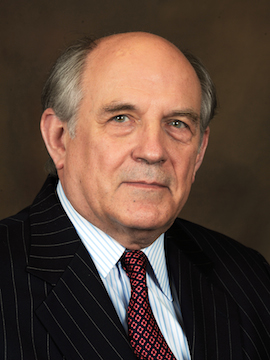
Charles Murray
CHARLES MURRAY is the author of two of the most widely debated and influential social policy books in the last […] More about Charles Murray.
- Books by the Author




